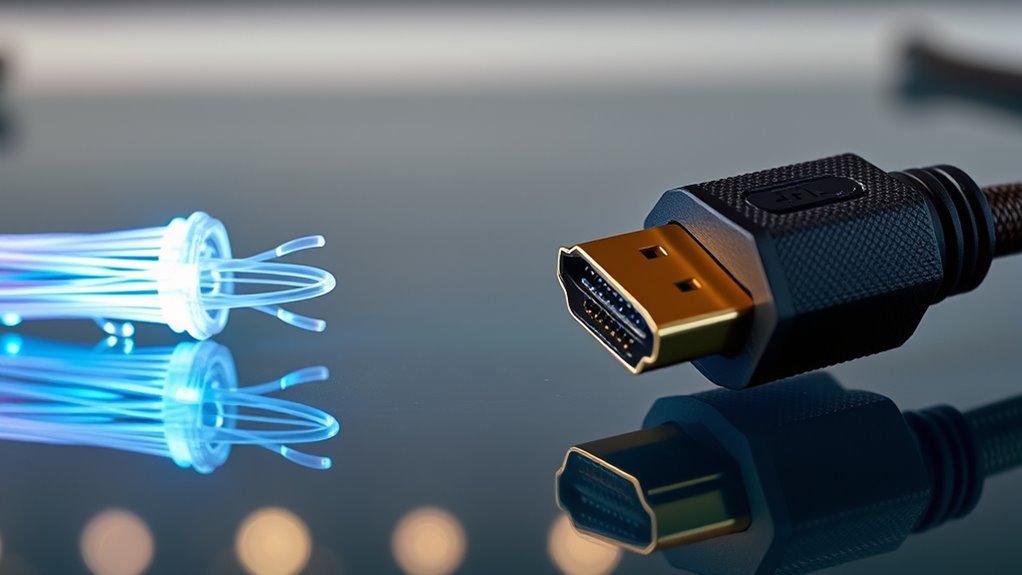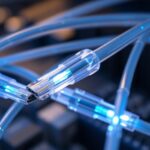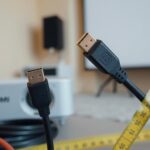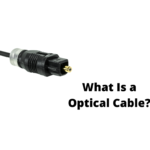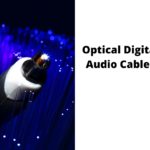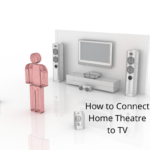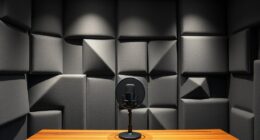For long-distance connections, fiber optic cables are the clear winner over HDMI. They transmit signals via light, so they offer less degradation, higher data rates, and better environmental resistance. HDMI cables are suitable only for short, indoor runs and can suffer from signal loss over distance. If you want a reliable, future-proof setup, fiber is the best choice. Keep exploring to find out more about which option suits your specific needs.
Key Takeaways
- Fiber optic cables provide superior signal quality and minimal loss over long distances, unlike HDMI which suffers degradation beyond a few meters.
- Fiber is more resistant to environmental factors and electromagnetic interference, making it ideal for outdoor and industrial long-distance setups.
- Although costlier initially, fiber offers greater durability and lower long-term maintenance compared to HDMI cables.
- Installing fiber requires specialized tools and expertise, but it ensures reliable, scalable connectivity for future upgrades.
- For distances over 50 feet, fiber is the preferred choice due to better performance and longevity in long-range applications.
Understanding Signal Transmission: Fiber Optic Vs HDMI

While both fiber optic and HDMI cables transmit signals, they do so using fundamentally different methods. Fiber optic cables rely on light signals traveling through thin glass or plastic fibers, offering superior optical clarity that minimizes signal degradation. This technology guarantees your data remains clear and accurate over long distances. Additionally, fiber optic cables are known for their cable flexibility, making them easier to install around tight corners or in complex setups. HDMI cables, on the other hand, transmit electrical signals through copper conductors. They’re generally less flexible and can be more prone to interference, but they’re straightforward for connecting devices within shorter ranges. Understanding these differences helps you choose the right type for your needs based on how signals are transmitted and the physical properties of each cable. Fiber optic technology also offers higher bandwidth capabilities, making it suitable for future-proofing your setup. Moreover, the transmission method used in fiber optics ensures minimal signal loss over extended distances, which is vital for large home theater installations.
Performance and Signal Quality Over Distance

When it comes to maintaining signal integrity over longer distances, fiber optic cables generally outperform HDMI cables. They deliver higher quality signals with minimal loss, ensuring your picture stays clear and sharp. Unlike HDMI cables, fiber can transmit data over much greater distances without degradation. This advantage becomes even more significant when considering wireless alternatives, which can introduce latency or signal drops. To emphasize, fiber offers:
- Consistent performance over long runs, unaffected by electromagnetic interference
- Resistance to signal interference that can distort HDMI signals
- Reliable, high-quality transmission suitable for professional setups or large spaces
- Vetted solutions designed specifically for long-distance data transmission.
While HDMI cables may struggle beyond a few meters, fiber guarantees your signal remains intact, making it the superior choice for long-distance connections.
Cost Comparison: Initial Investment and Long-Term Expenses
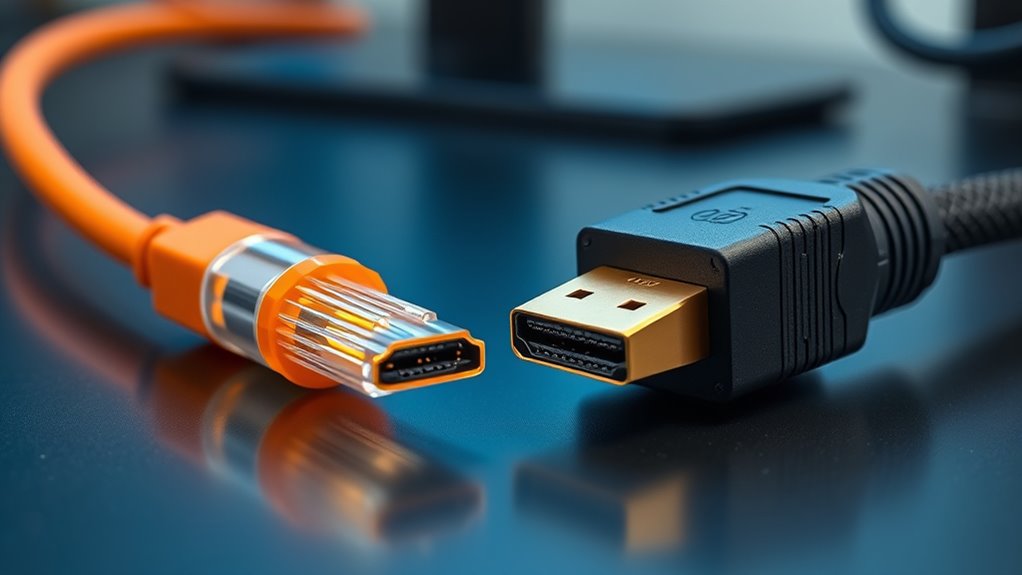
Fiber optic cables typically require a higher upfront investment compared to HDMI cables, primarily due to their more complex manufacturing and installation processes. While the initial cost might seem steep, this investment can pay off over time through reduced maintenance and longer lifespan. When considering branding considerations, fiber optics often provide a sleek, modern look that can enhance your setup’s aesthetic integration. HDMI cables, on the other hand, are generally cheaper upfront but may need replacements sooner, increasing long-term expenses. If visual appeal and seamless integration matter to you, fiber optics offer a cleaner, more professional appearance. Though the initial costs are higher, their durability and minimal signal degradation can lead to lower costs over the long run, making them a smart choice for long-distance, high-quality connections.
Installation Process and Ease of Setup

Installing fiber optic cables can be more involved than setting up HDMI cables, but the process is generally straightforward with proper planning. Fiber’s installation complexity often requires specialized tools and careful handling, but it pays off with reliable long-distance connections. Additionally, understanding industry trends can help in selecting the best cables and setup methods. Proper installation procedures are crucial for maximizing signal quality and durability. In addition, considering fiber cable types can influence the ease of installation and performance. For example, choosing the right fiber core size can simplify handling and splicing. Conversely, HDMI cables boast setup simplicity, making quick connections easy even for beginners. To make the process smoother, keep these tips in mind:
- Choose the right cable length to avoid unnecessary splicing.
- Use proper connectors and tools for secure connections.
- Plan cable routes to minimize bends and interference.
- Understanding the installation process for each type can help prevent issues and ensure optimal signal quality.
While fiber installation may take more time and effort initially, it’s designed for stable, high-quality signals over long distances. HDMI’s quick setup is ideal for shorter runs but may lack the durability needed for complex installations.
Durability and Environmental Resistance
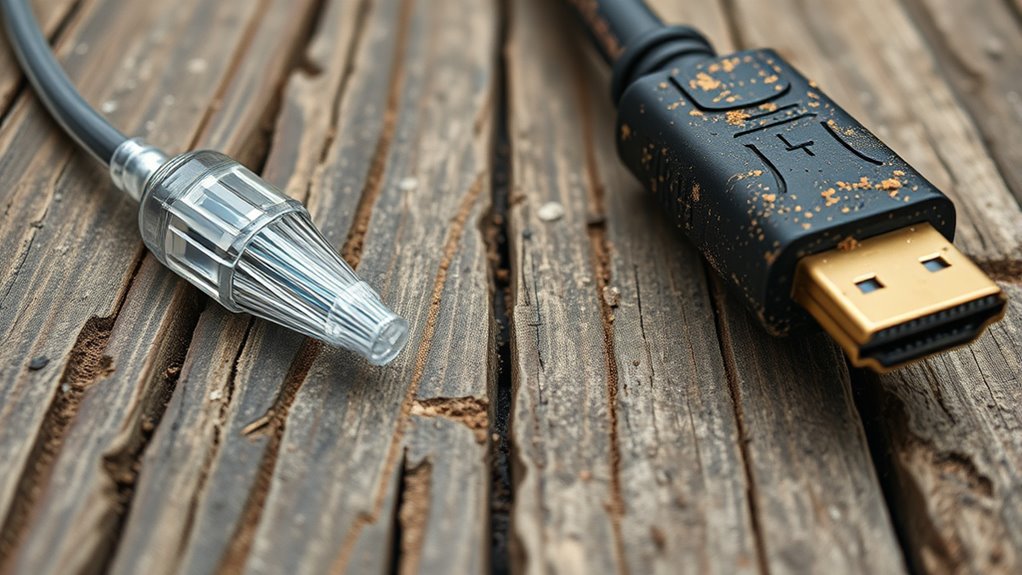
Fiber optic cables generally offer superior durability and environmental resistance compared to HDMI cables. They withstand harsh conditions better, making them ideal for long-term outdoor use. Their weather resistance guarantees performance in rain, snow, or extreme temperatures. Additionally, fiber cables are physically robust, resisting bending, tension, and physical damage more effectively. This resilience makes them particularly suitable for outdoor installations, where environmental factors can compromise cable integrity. Moreover, the material composition of fiber optic cables contributes to their exceptional durability and resistance to environmental stressors. The flexibility of fiber optic cables also plays a crucial role in their ability to perform reliably in various settings, including those with limited space or requiring complex routing. The signal transmission capabilities of fiber optic cables ensure minimal loss over long distances, maintaining high-quality performance. Ensuring compliance with safety standards further enhances their reliability in challenging conditions.
Compatibility and Device Integration

While both fiber optic and HDMI cables connect devices effectively, their compatibility and integration with hardware can differ considerably. Fiber optic cables often require specific transceivers, limiting device interoperability without adapters. In contrast, HDMI cables are widely compatible due to established protocol standards. When considering device integration, keep in mind:
- HDMI supports common protocols like HDCP and HDMI-CEC, easing setup.
- Fiber optics may need converters to match different signal protocols.
- Compatibility issues can arise if devices lack the necessary ports or support for specific standards.
Your choice depends on understanding these factors to ensure seamless device interoperability. HDMI’s standardized protocol compatibility makes it easier for consumer electronics, while fiber optics excel in high-performance, long-distance setups with specialized hardware.
Future-Proofing and Scalability

As you plan for the future, consider how well your cables will handle upgrades and evolving technology. Fiber optics often offer longer-lasting infrastructure and easier upgrades compared to HDMI. Investing in scalable, cost-effective solutions now can save you time and money down the line. Additionally, choosing cables with scalability benefits that complement your setup can enhance both functionality and aesthetic appeal. Selecting cables that maintain performance over time, such as those resistant to degradation, ensures your system stays reliable as your needs grow. Moreover, understanding future-proofing options can help you adapt seamlessly to new devices and standards.
Infrastructure Longevity and Upgrades
Choosing the right cable technology is essential for ensuring your setup stays relevant as technology advances. Fiber cables excel in infrastructure longevity because they’re highly durable and capable of handling future upgrades. HDMI cables, on the other hand, may require frequent replacements due to limited bandwidth and potential wear over time. When considering upgrades, keep in mind:
- Fiber cables offer greater cable flexibility, making installations in tight or complex spaces easier.
- Installation complexity is generally lower for fiber, especially for longer runs, reducing the risk of damage.
- Upgrading fiber infrastructure is more straightforward, supporting higher data rates without needing complete replacements.
Compatibility With Emerging Tech
Fiber optic cables are better equipped to handle emerging technology because they support higher data rates and advanced features without needing significant upgrades. This makes them more future-proof as tech evolves. While wireless alternatives grow popular, fiber offers reliable, high-capacity connections that can scale with your needs. Plus, fiber’s cable flexibility allows easier installation in complex setups or long distances, unlike rigid HDMI cables. To help you compare, here’s a quick overview: high data capacity. Additionally, fiber’s ability to support advanced networking ensures compatibility with upcoming innovations and increased demand for bandwidth. Because fiber optic technology is aligned with AI-driven applications, it is well-suited to meet future data processing requirements. As network infrastructure continues to develop, fiber’s scalability and robustness will prove increasingly beneficial.
Cost-Effective Long-Term Solutions
Investing in fiber optic cables offers a cost-effective long-term solution because they provide scalable and future-proof connectivity that can adapt to evolving technology needs. While initial cost considerations and installation challenges may seem high, fiber’s ability to support higher bandwidths ensures your setup remains relevant for years. With fiber, you avoid frequent upgrades, saving money over time. Consider these benefits:
- Increased capacity for future devices and data loads
- Compatibility with upcoming tech standards, reducing replacement costs
- Simplified scalability, allowing you to upgrade by adding new fibers rather than replacing entire systems
Although installation challenges exist, opting for fiber now means fewer costly overhauls later, making it a smart long-term choice.
Common Use Cases and Recommendations
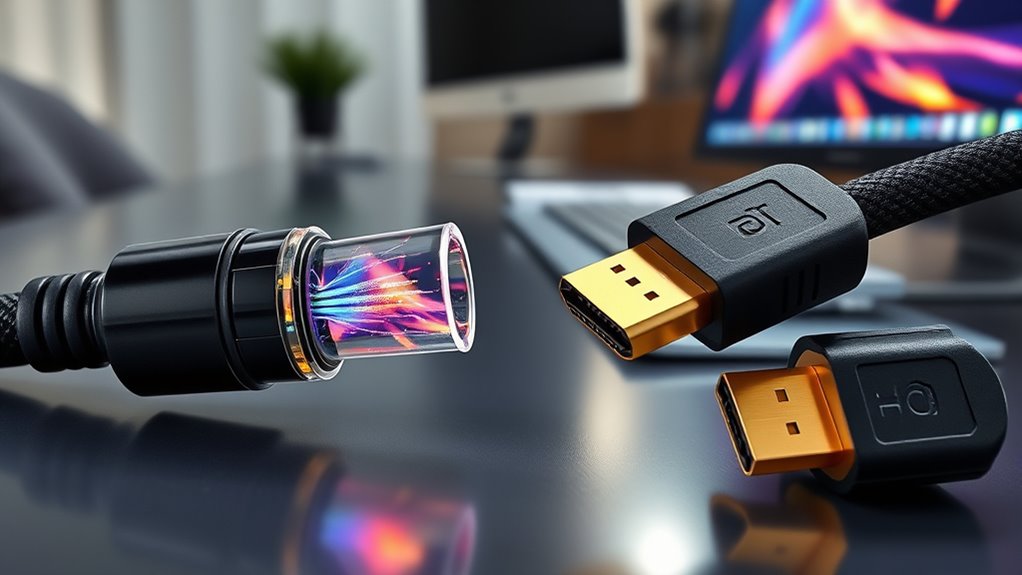
When choosing between fiber and HDMI cables, consider the distances you’ll need to cover and the environment you’ll use them in. Fiber optics excel over longer runs, especially in large venues or outdoor settings, while HDMI is ideal for shorter, indoor connections. Think about your setup to select the best cable type for your specific use case.
Optimal Distance Scenarios
Choosing the right cable for your setup depends heavily on the distance you need to cover. For shorter distances, HDMI cables often suffice, but beyond 50 feet, bandwidth limitations and interference issues become critical. Fiber optic cables excel over longer runs because they maintain signal integrity and are immune to electromagnetic interference. For excellent use:
- Use HDMI for runs under 50 feet in controlled environments.
- Switch to fiber optic cables for distances of 50-300 feet, minimizing bandwidth loss.
- Consider fiber for distances exceeding 300 feet, especially where interference is high.
This approach ensures you avoid signal degradation caused by bandwidth limitations and interference issues, providing a clear, stable connection regardless of distance. Always evaluate your environment and required length to choose the most dependable, long-distance solution.
Recommended Application Environments
Selecting the right cable type depends on your specific environment and application needs. For industrial settings, fiber optic cables are ideal due to their durability, resistance to electromagnetic interference, and ability to handle long distances reliably. They’re perfect for factories or manufacturing plants where interference could disrupt signals. Outdoor environments also favor fiber optics, as they withstand harsh weather conditions, UV exposure, and physical stress better than HDMI cables. HDMI cables are best suited for short-distance, indoor use, such as home theaters, conference rooms, or office setups. If you need a long-term, reliable connection in challenging environments, fiber is your best choice. For casual, short-range applications, especially indoors, HDMI cables offer convenience and ease of installation.
Making the Best Choice for Your Needs
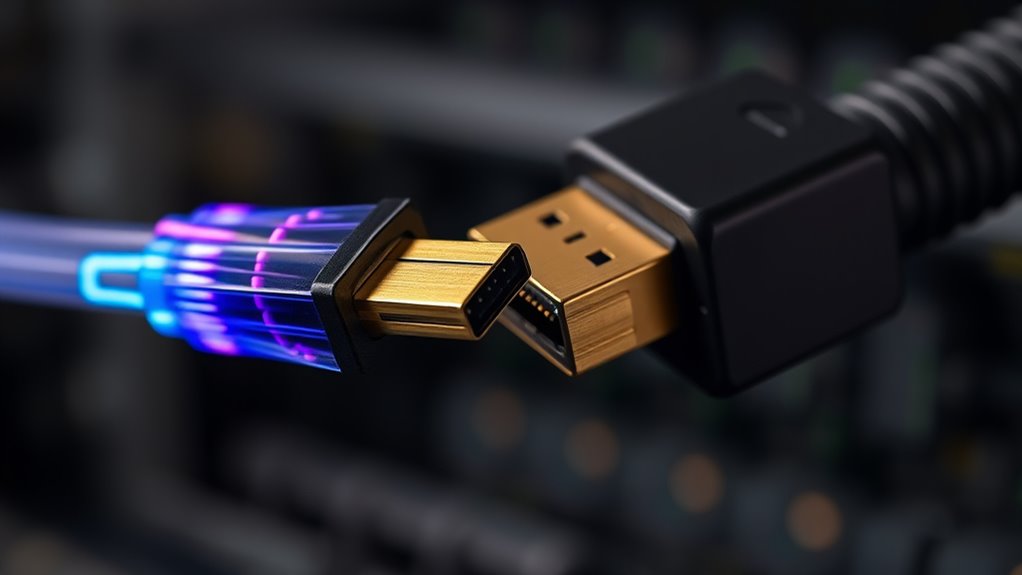
To determine whether fiber optic or HDMI cables are right for your setup, consider your specific needs and priorities. If you value minimal latency and high-quality signal transmission over long distances, fiber is the better choice. On the other hand, if ease of installation and compatibility matter most, HDMI might suit you better. Keep these points in mind:
- Wireless alternatives can sometimes eliminate the need for long cables altogether.
- Aesthetic considerations are important if you prefer a clean, clutter-free setup.
- Think about your environment—fiber offers durability in complex setups, while HDMI provides straightforward connectivity.
Frequently Asked Questions
Which Cable Type Offers Better Security for Data Transmission?
When considering which cable type offers better security for data transmission, you should look at encryption standards and hacking vulnerabilities. Fiber optic cables are more secure because they use light signals, making interception difficult and reducing hacking vulnerabilities. Unlike HDMI cables, fiber optics inherently support stronger encryption, protecting your data from unauthorized access. So, for better security, fiber optic cables are the preferred choice, especially when sensitive information is involved.
How Do Fiber and HDMI Cables Impact Overall System Latency?
Did you know that fiber optic cables can transmit data at nearly the speed of light, reducing latency markedly? When considering system latency, fiber excels because it has minimal signal attenuation and high interference resistance, ensuring quick, reliable data transfer. HDMI cables, especially over long distances, may introduce delays due to signal degradation. So, if low latency is essential, fiber optic cables are your best bet, providing faster, more consistent performance.
Are Fiber Optic Cables More Environmentally Friendly Than HDMI?
You might wonder if fiber optic cables are more eco-friendly than HDMI. Generally, fiber cables have a lower environmental impact due to their energy efficiency and longer lifespan. Their manufacturing impact is also less harmful because they use fewer hazardous materials. While no cable is perfectly eco-friendly, fiber optics tend to be better for the environment overall, especially when considering longevity and reduced energy consumption.
Can Existing HDMI Cables Be Upgraded for Longer Distances?
You can upgrade your existing HDMI cables for longer distances by using a fiber extender. These devices boost HDMI compatibility and allow you to extend signals beyond typical cable limits. Simply connect your HDMI source to the extender, then run fiber optic cables to the display. This way, you avoid replacing your entire setup and guarantee high-quality, long-distance transmission without signal loss.
What Are the Typical Maintenance Requirements for Fiber Versus HDMI Cables?
Getting down to brass tacks, maintenance varies markedly. With fiber, you’ll face fewer installation challenges and enjoy better durability, but it requires careful handling and occasional cleaning of connectors. HDMI cables demand less upkeep but are more prone to wear and tear over time. You should regularly inspect connections and replace damaged cables. Overall, fiber’s durability considerations make it a low-maintenance choice, but proper handling is key to longevity.
Conclusion
When choosing between fiber and HDMI cables for long distances, consider your specific needs. Fiber optics can transmit signals up to 10 kilometers without signal loss, making them ideal for large-scale setups. While initially more expensive, they’re more durable and future-proof. If you’re looking for reliability over long distances, fiber wins—especially since 70% of professional installations now prefer it for high-quality, long-range connections. Make the smart choice based on your environment and goals.
